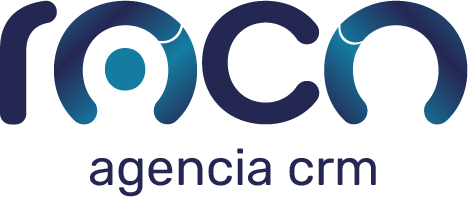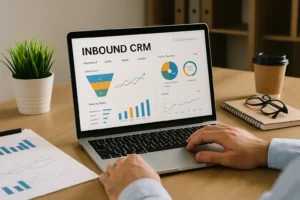¿Te preguntas qué es hardware y software? Son dos términos que constantemente se escuchan, pero ¿qué significan realmente y cómo pueden ser útiles para tu empresa? En este blog, desglosaremos estos conceptos vitales y exploraremos las diferencias clave entre ellos. Además, te mostraremos por qué comprender estas diferencias es esencial para el éxito de tu negocio en la era digital.
La Agencia Roco CRM se destaca en el panorama empresarial al ofrecer estrategias con un enfoque integral en hardware y software. Potencia tus relaciones con clientes, impulsando la productividad y maximizando la rentabilidad. Somos tu aliado ideal para alcanzar tus objetivos de negocio con eficacia y excelencia.
¿Qué es Hardware y Software?
En este viaje para comprender la tecnología, primero desglosemos lo que significan hardware y software.
El hardware se refiere a los componentes físicos de una computadora o dispositivo electrónico. Esto incluye elementos como procesadores, memoria RAM, discos duros, monitores y cualquier cosa que puedas tocar y sentir. El hardware es la estructura física que permite que las aplicaciones y programas funcionen.
El corazón de cualquier dispositivo es su hardware. Imagina una computadora de escritorio: su CPU es un componente de hardware que realiza cálculos y procesa datos.
La memoria RAM es otro componente de hardware que almacena datos temporalmente para que la CPU pueda acceder a ellos rápidamente. El hardware proporciona la capacidad de ejecutar software y llevar a cabo tareas específicas.
Por otro lado, el software es el conjunto de programas, aplicaciones y sistemas operativos que se ejecutan en el hardware. El software es intangible y, en su mayoría, se encuentra en forma de archivos digitales.
Piensa en el sistema operativo de una computadora, como Windows o macOS, como un ejemplo de software. También están las aplicaciones que utilizamos en nuestros dispositivos, como navegadores web, suites de oficina y aplicaciones de redes sociales. Todas estas son formas de software que permiten a los usuarios realizar diversas tareas en sus dispositivos.
Para simplificarlo aún más, el hardware es como el esqueleto de un dispositivo, proporcionando la estructura y la capacidad física, mientras que el software es como el cerebro, dirigiendo cómo se utilizan y procesan esos recursos físicos para realizar tareas específicas.
Las 7 Diferencias Clave entre Hardware y Software
Podemos decir que Hardware y Software son dos mundos diferentes:
- Naturaleza Física vs. Lógica: La diferencia más fundamental es que el hardware es tangible, mientras que el software es intangible. Puedes ver y tocar el hardware, pero el software consiste en códigos y programas que no puedes tocar físicamente.
- Flexibilidad vs. Fijeza: El hardware es relativamente fijo en comparación con el software. Si deseas actualizar el hardware, generalmente debes reemplazar componentes físicos, mientras que el software se puede actualizar y modificar más fácilmente.
- Costos y Mantenimiento: El hardware a menudo implica costos iniciales más altos, ya que requiere inversión en dispositivos físicos. El software, por otro lado, puede ser más económico y su mantenimiento suele ser menos costoso.
- Tiempo de Vida: El hardware generalmente tiene un ciclo de vida más largo que el software. Los dispositivos pueden durar varios años, mientras que las aplicaciones y programas a menudo se actualizan con frecuencia.
- Personalización vs. Estandarización: El software es altamente personalizable para satisfacer las necesidades específicas de una empresa, mientras que el hardware suele seguir estándares más generales.
- Escalabilidad: La escalabilidad del software es más fácil de lograr que la del hardware. Puedes agregar más usuarios o funciones mediante actualizaciones de software sin necesidad de adquirir nuevos dispositivos.
- Funcionalidad Directa vs. Indirecta: El hardware proporciona la base para que el software funcione. El software, a su vez, permite que el hardware realice tareas específicas de manera eficiente.

Hardware y Software para una Empresa: Una Perspectiva Atractiva
Luego de haber desglosado qué es hardware y software, es hora de comprender cómo estos conceptos pueden ser beneficiosos para tu empresa. La combinación adecuada de hardware y software puede aumentar la productividad, mejorar la eficiencia y facilitar la toma de decisiones informadas.
Por ejemplo, una empresa de logística puede utilizar software de gestión de inventario para rastrear sus productos y hardware como escáneres de códigos de barras para registrar datos con precisión. Esta sinergia entre hardware y software permite un flujo de trabajo más eficiente y un mejor servicio al cliente.
En resumen, hardware y software son dos pilares tecnológicos que tu empresa no puede pasar por alto. Comprender sus diferencias y aprovechar su potencial puede marcar la diferencia entre el éxito y el estancamiento en un mundo empresarial cada vez más digital.
En conclusión, el hardware y el software son fundamentales para cualquier empresa en la era digital. Aprovechar sus ventajas puede marcar una gran diferencia en la eficiencia y el éxito de tu negocio. Así que, ya seas un emprendedor como Roco o un empresario experimentado, invertir tiempo en comprender estos conceptos es una inversión que vale la pena para el futuro de tu empresa.
Hemos explorado el fascinante mundo de hardware y software, dos pilares tecnológicos fundamentales. Hemos desglosado sus diferencias clave y destacado su importancia para las empresas en la era digital. Comprender cómo funcionan el hardware y el software es esencial para tomar decisiones informadas y optimizar recursos.
Estos elementos son como engranajes interconectados que impulsan la eficiencia y la productividad empresarial. Desde la flexibilidad del software hasta la solidez del hardware, ambas facetas tecnológicas desempeñan un papel vital en el éxito empresarial.
La agencia Roco CRM puede transformar tu empresa al optimizar la gestión de relaciones con clientes. A través de soluciones personalizadas, integra hardware y software para mejorar la retención de clientes, aumentar la eficiencia operativa y ofrecer experiencias excepcionales. Roco CRM es tu socio para el crecimiento y la fidelización.







